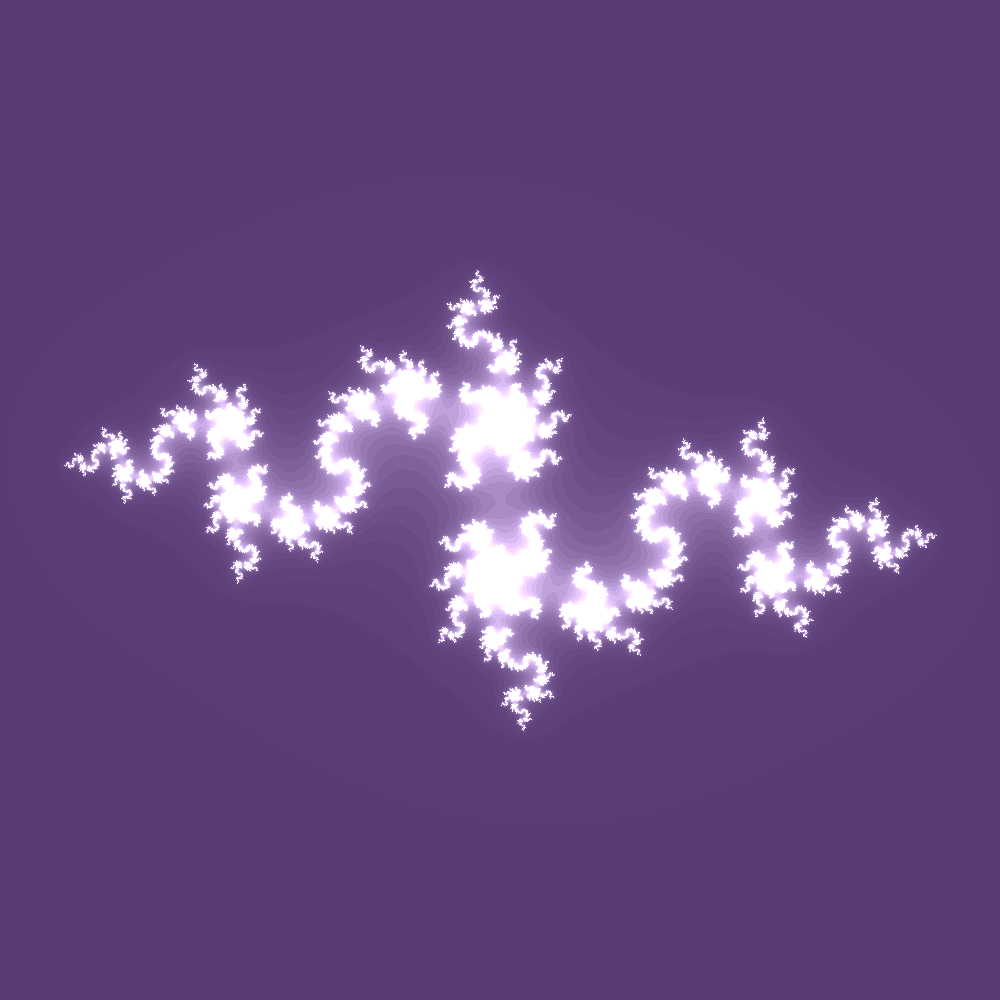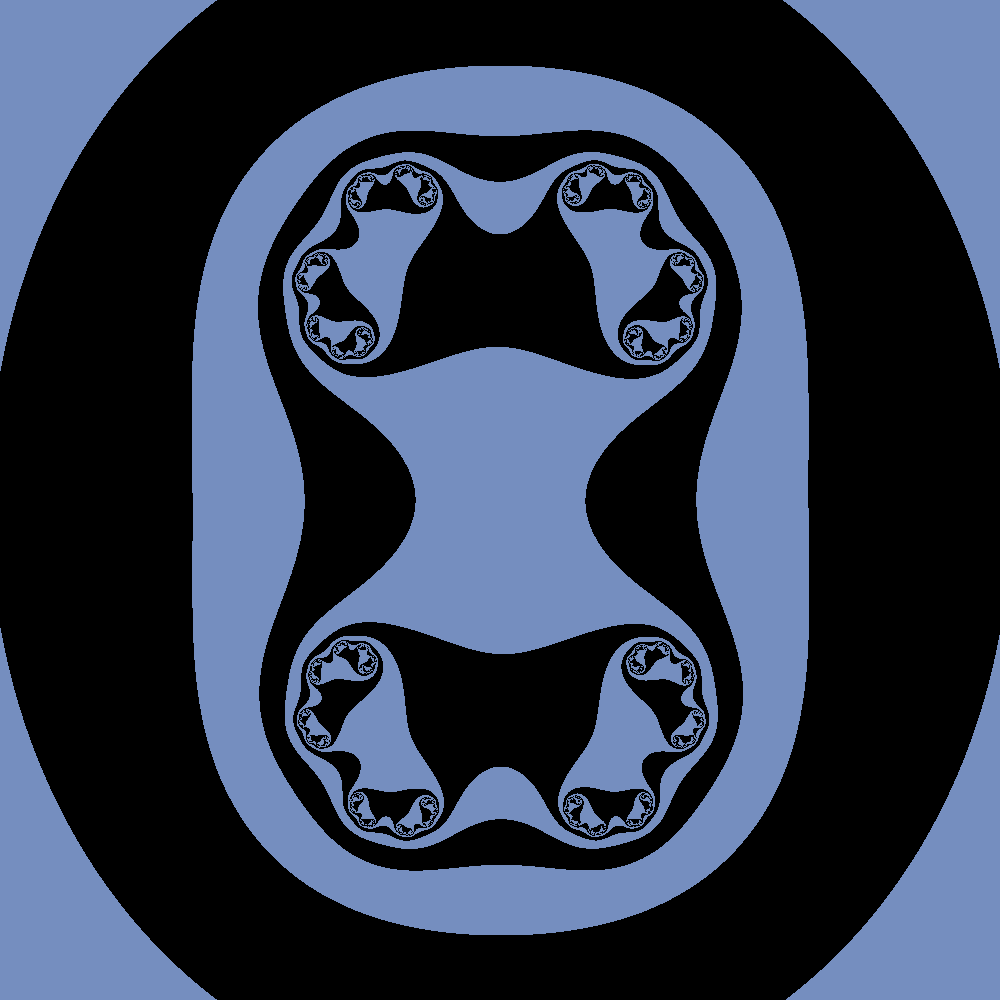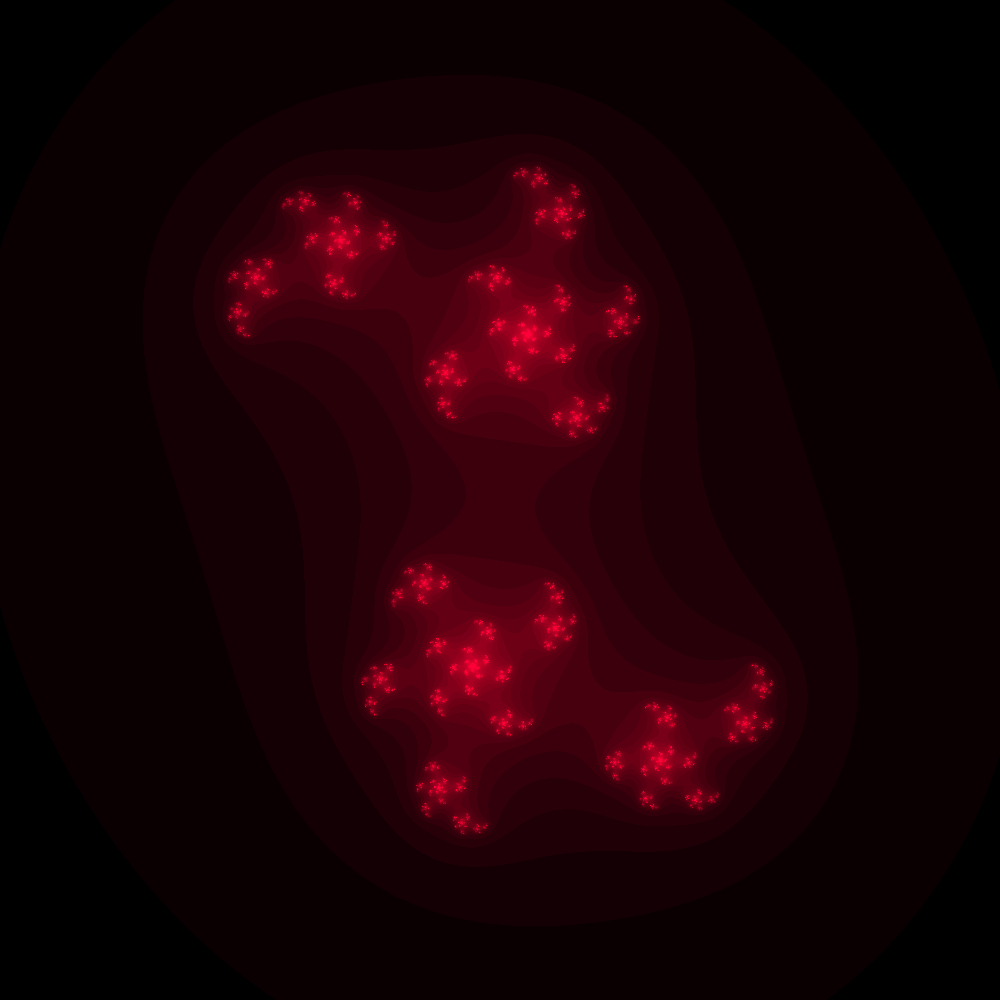Command line tool for generating Julia
Project description
Julia Art "juliart"
This module is based on the Color Julia Bot but intended for command line generation, and with options to customize colors based on themes (holidays, seasons) and also generate animations. The name "juliart" is also a play on word (Juliard) to hint at artsy things.
I've done my best so that the default parameters produce (what I think to be) the most random and pretty images. You can of course tweak the parameters to your liking, discussed below!
Usage
Install
You can install from pypi
pip install juliart
or install from the repository directly:
$ git clone https://github.com/vsoch/juliart
$ python setup.py install
for animations you'll also need an extra package:
pip install juliart[animate]
Generate Art
You can see basic usage by typing juliart into your terminal:
$ juliart
usage: juliart [-h] [--version] {generate,animate} ...
Julia Set art generator
optional arguments:
-h, --help show this help message and exit
--version suppress additional output.
actions:
actions for Julia Set art generator
{generate,animate} juliart actions
generate generate a Julia Set image
animate create a Julia Set animation (gif)
You'll see there are two options: to generate, and to animate.
Generate
Customizations for the generate command generally include color or theme choices, and parameters.
$ juliart generate --help
usage: juliart generate [-h] [--force] [--outfile OUTFILE] [--res RES]
[--iter ITERS] [--color {random,pattern,glow}]
[--rgb RGB]
[--theme {christmas,easter,fall,random,halloween,hanukkah,spring,summer,thanksgiving,valentine,winter}]
[--zoom ZOOM]
optional arguments:
-h, --help show this help message and exit
--force, -f force generation of image if already exists.
--outfile OUTFILE the output file to save the image (defaults to
randomly generated png)
--res RES the resolution to generate (defaults to 1000)
--iter ITERS the number of iterations per pixel (defaults to 200)
--color {random,pattern,glow}
a color pattern to follow.
--rgb RGB a specific rbg color, in format R,G,B
--theme {christmas,easter,fall,random,halloween,hanukkah,spring,summer,thanksgiving,valentine,winter}
a theme to color the art (defaults to random colors)
--zoom ZOOM the level of zoom (defaults to 1.8)
If you use the defaults, it will generate a randomly named image in your present working directory.
$ juliart generate
Generating Julia Set...
Saving image to doopy-kerfuffle-5780.png
Otherwise you can do any of the customizations shown above! Try playing around with iterations, colors/themes, and zoom to see different effects.
$ juliart generate --zoom 3
$ juliart generate --iter 100
It's probably easiest to see how varying parameters (namely the zoom and those that aren't set by the client, the value of A and B around the circle) changes the graphic by using the animation command, discussed next.
To generate from within Python, here is a quick example:
from juliart.main import JuliaSet
juliaset = JuliaSet(
resolution=1000, # (1000x1000)
color="random", # random, glow, pattern
theme="random",
rgb=None, # "197,18,12"
iterations=200,
)
juliaset.generate_image(zoom=1.8)
juliaset.save_image("/tmp/myimage.png")
Animate
You can inspect the parameters for the animation command as follows:
$ juliart animate --help
usage: juliart animate [-h] [--no-cleanup] [--constant-a] [--constant-b]
[--randomize-zoom] [--zoom-max ZOOM_MAX]
[--zoom-min ZOOM_MIN] [--frames FRAMES]
[--outfile OUTFILE] [--res RES] [--iter ITERS]
[--color {random,pattern,glow}] [--rgb RGB]
[--theme {christmas,easter,fall,random,halloween,hanukkah,spring,summer,thanksgiving,valentine,winter}]
[--zoom ZOOM]
optional arguments:
-h, --help show this help message and exit
--no-cleanup Do not delete temporary directory with png files to
generate gif.
--constant-a Don't randomize the point A on the circle.
--constant-b Don't randomize the point B on the circle.
--randomize-zoom Randomize the zoom up to --zoom-min or --zoom-max.
--zoom-max ZOOM_MAX the max zoom (must be greater than 3)
--zoom-min ZOOM_MIN the max zoom (must be greater than 0)
--frames FRAMES the number of frames to generate (default is 30)
--outfile OUTFILE the output file to save the image (defaults to
randomly generated png)
--res RES the resolution to generate (defaults to 1000)
--iter ITERS the number of iterations per pixel (defaults to 200)
--color {random,pattern,glow}
a color pattern to follow.
--rgb RGB a specific rbg color, in format R,G,B
--theme {christmas,easter,fall,random,halloween,hanukkah,spring,summer,thanksgiving,valentine,winter}
a theme to color the art (defaults to random colors)
--zoom ZOOM the level of zoom (defaults to 1.8)
Most of these defaults (mins and maxes) are fairly reasonable and you wouldn't want to change them. By default, we will vary both the A and B constants that are used to generate the Julia Set, but we won't vary the zoom.
Defaults
The defaults will generate a 30 framed animation, varying the parameters A and B but not the zoom, with resolution (1000 X 1000) and 200 iterations.
$ juliart animate --frames 5
Optimize
You can make that faster by changing the iterations and resolution, of course!
$ juliart animate --res 500 --iters 100
The tradeoff is image quality. You'll also notice in the case of generating black pixels it takes slightly longer than white pixels (since white is an absence of color).
Cleanup
If you want to keep the temporary png images (the frames) you can do:
$ juliart animate --no-cleanup
Frames
If you want to customize the number of frames, you can do that too (we default to 30). Here would be a smaller / quicker to generate image:
$ juliart animate --frames 5
To also randomize the zoom, specify:
$ juliart animate --randomize-zoom --frames 5
To generate from within Python, it's fairly straight forward:
from juliart.main import JuliaSetAnimation
juliaset = JuliaSetAnimation(
resolution=args.res,
color=args.color,
theme=args.theme,
rgb=args.rgb,
cleanup=not args.skip_cleanup,
iterations=args.iters,
zoom_max=args.zoom_max,
zoom_min=args.zoom_min,
)
juliaset.generate_animation(
zoom=args.zoom,
outfile=args.outfile,
frames=args.frames,
randomize_x=not args.constant_a,
randomize_y=not args.constant_b,
randomize_zoom=args.randomize_zoom,
)
Colors
The three choices for colors are random, pattern, or glow, or setting your own RGB value.
Random
Random is the default, and the image at the top of the README here is generated using this setting. Take a look at more more random examples.
Pattern
Pattern doesn't use a gradual gradient, but instead returns a hard boundary between a color (and black).
Take a look at more more pattern examples here.
RGB
If you want complete control of the color, provide a comma separated list of RGB numbers as follows:
$ juliart generate --rgb 9,35,155
Note that this will also work with the --color pattern flag.
Glow
Glow means a dark background (black) with a color gradient. Here is an example:
And is generated as follows:
juliart generate --color glow
See more glow examples.
If you choose glow, this will overwrite the choice of a theme (discussed next).
Themes
To get a little more variety in your choice of colors, you can select a theme!
juliart generate --theme halloween
juliart generate --theme christmas
juliart generate --theme hanukkah
juliart generate --theme thanksgiving
juliart generate --theme valentine
juliart generate --theme easter
juliart generate --theme fall
juliart generate --theme spring
juliart generate --theme summer
juliart generate --theme winter
For any of the commands above, you can also add --color pattern to flip the background
from the theme color to be black.
$ juliart generate --theme halloween --color pattern
Take a look at images in the themes folder to get a sense of the color palettes.
Docker
You can run the pre-generated Docker container too! You'll need to bind a folder on the host to save the image to.
$ mkdir data
$ docker run -it -v $PWD/data/:/data vanessa/juliart generate --outfile /data/art.png
You can also build the image first if you like:
$ docker build -t vanessa/juliart .
Support
Do you have a question? Or want to suggest a feature to make it better? Please open an issue!
Project details
Download files
Download the file for your platform. If you're not sure which to choose, learn more about installing packages.
















